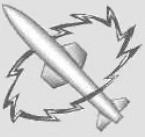Philbass
Posts: 34
Joined: 12/30/2004
From: London, UK
Status: offline

|
Okay.
Here is my version of the Monitors which would have arrived in the Indian Ocean in September 1945 (they left Suez in mid August 1945).
I have guestimated several values (endurance, light AA load out, durability) and if anyone has the 'definitive' source: Buxton I L (1978) Big Gun Monitors (??:Tynemouth, England) then feel free to correct this. Red text = guestimate.
I am surprised (or am I) that Matrix just modelled armour based on maximum sizes. Are torpedo bulges modelled into the 'Durability' rating? I assume that they aren't in the 'Belt Armour' Factor. Also, the type of armour (not just size) was important. It has been argued (Brown, D K (2000) Nelson to Vanguard: Warship Development 1923-1945 (London: Conway) p24) that:
...the armour of the King George V and later ships being about 25 per cent more effective than First World War armour. German developments were similar as shown by post-war tests on plates removed from the Tirpitz. The USN failed to achieve similar advances, and the armour of their Second World War ships was no better than those of the earlier war.
Looking at the King George V Class deck armour therefore could be 180-190 (vice 159 in the database) for Deck Armour, 430 (vice 360 in the database) and 133 (vice 108 in the database) for the Tower Armour. Only a thought, some real 'armour head' needs to think about this perhaps...
Of course, if I was to mess with the KGV then the endurance needs to be taken down from 15000. A realistic assessment would be:
... 6000 miles at 10kts or 5000kts at 20kts with 3770 tons of oil. (The small differnce between these these figures reflects the very heavy consumption of the auxiliary machinery.) In 1942 the USS Washington was operating with the Home Fleet and Admiral Tovey reported her fuel consumption was 39 per cent less than King George V at lower speeds and still superior at higher speeds which with a fuel stowage gave the US ship double the endurance of the British battleship.
Source: Brown, D K (200) p33
Also it may be overestimating RN warships by giving them the US Damage Control Advantage. The argument goes that the RN arrangement of boilers and engine rooms was inferior to the US at least until the late war cruisers and the post-war 'Weapon and 'Daring' destroyer classes. The RN ships were in greater danger of losing all power (as happen to HMS Warspite at Salerno). In addition, the small RN cruisers, particularly the 'Didos' were vulnerable to capsize due to outboard wing compartments that if hit by torpedo, " two or probably three main compartments would be flooded greatly reducing the stability so that the asymmetric buoyancy of the other wing compartment would cause a very large heel and , in all probability, capsize the ship". Source: Brown, D K (2000) p73. Also, a damage control school was only set up post the loss of HMSArk Royal(Nov 1941) and there was a lack of fire-fighting equipment, small pumps and alternative power sources. But perhaps by late-war it was much better, so it all comes out in the wash.
Any thoughts??
Regards,
Phil Bass

 Attachment (1) Attachment (1)
_____________________________
Plan followed plan in swift procession,
Commanders went; commanders came,
While telegrams in quick succession
Arrived to douse or fan the flame
|
 Printable Version
Printable Version























 New Messages
New Messages No New Messages
No New Messages Hot Topic w/ New Messages
Hot Topic w/ New Messages Hot Topic w/o New Messages
Hot Topic w/o New Messages Locked w/ New Messages
Locked w/ New Messages Locked w/o New Messages
Locked w/o New Messages Post New Thread
Post New Thread